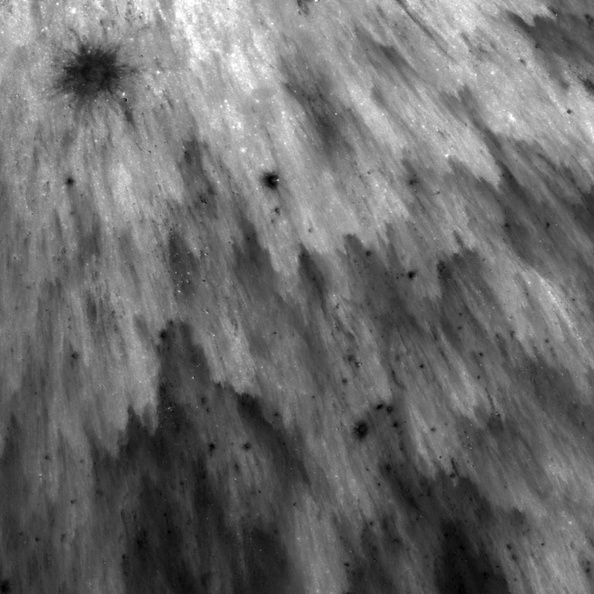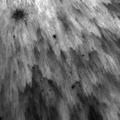
WIKIARCHIVES.SPACE
The Human Spaceflight Archive

Fresh ejecta blanket of an unnamed 1 km diameter crater. Image number M154813223R, incidence angle 13°, image is 750 meters across.
Information
- Autors
- NASA/GSFC/Arizona State University
- Apraksts
-
Fresh ejecta blanket of an unnamed 1 km diameter crater. Image number M154813223R, incidence angle 13°, image is 750 meters across.
This small crater displays a beautiful ejecta pattern resembling a starburst. Looking at this image you can almost imagine the shower of ejecta falling to the ground. The pattern formed out of high and low reflectance areas is due to the freshness of the ejecta. Notice in the second image that as you move away from the center of the crater, the overall reflectance of the ejecta gets lower (darker). This is because the ejecta is less continuous as you get further away from the crater.
NASA's Goddard Space Flight Center built and manages the mission for the Exploration Systems Mission Directorate at NASA Headquarters in Washington. The Lunar Reconnaissance Orbiter Camera was designed to acquire data for landing site certification and to conduct polar illumination studies and global mapping. Operated by Arizona State University, LROC consists of a pair of narrow-angle cameras (NAC) and a single wide-angle camera (WAC). The mission is expected to return over 70 terabytes of image data.
- Izveidots
- Ceturtdiena 21 Aprīlis 2011
- Albūmi
- US SPACE PROGRAM / PROBES / MOON / LRO/LCROSS / Mission Photos (Edited)
- Source link
- https://photojournal.jpl.nasa.gov
- Apmeklējumi
- 217
- Rezultējošais vērtējums
- nav vērtējuma
- Vērtēt šo foto
- License
- Public Domain
- Modified by WikiArchives
- No (original)
- Lejupielādes
- 12
Skripts Piwigo



